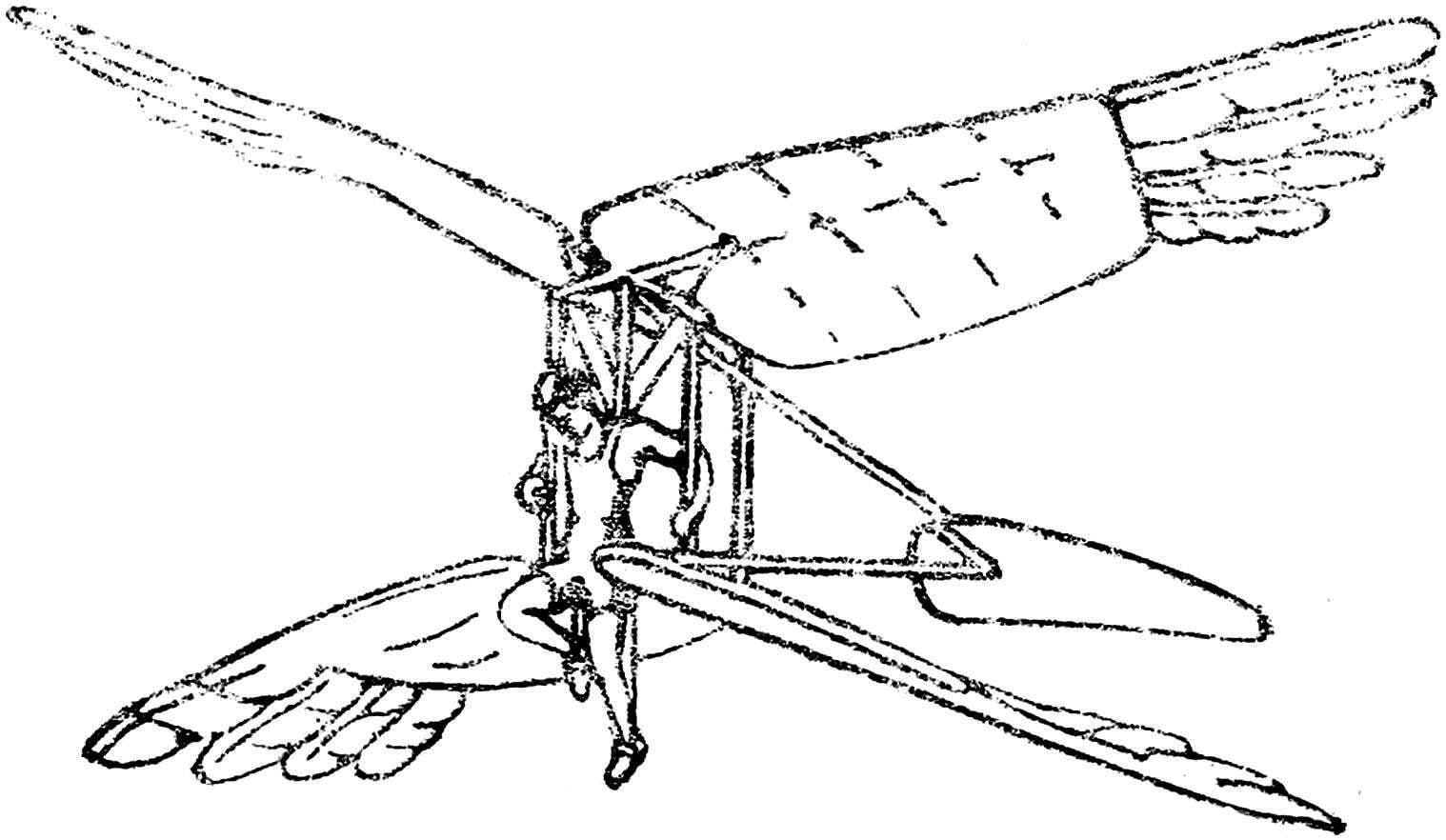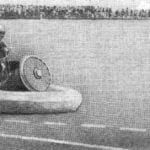 Dream master the air ocean has long been concerned with humanity. This is reflected in the legends of antiquity, and the works of scientists of antiquity. The mythological wings of Icarus were made of feathers bonded by wax. Leonardo da Vinci, developing a frame structure of the wings, hoped to move without hands, and stronger leg muscles. But the subdued air element was with… stationary wings. Flapping flight is still not revealed all its secrets.
Dream master the air ocean has long been concerned with humanity. This is reflected in the legends of antiquity, and the works of scientists of antiquity. The mythological wings of Icarus were made of feathers bonded by wax. Leonardo da Vinci, developing a frame structure of the wings, hoped to move without hands, and stronger leg muscles. But the subdued air element was with… stationary wings. Flapping flight is still not revealed all its secrets.
Meanwhile, in nature, insects, birds, and even animals use this principle of flight. Flapping wing performs two main functions: creates lift and thrust. The aircraft have fixed wings and propeller, rotated by the motor; a helicopter rotor of large diameter.
The bird’s wing even in passive gliding flight does not behave like the wing of a glider. Under the influence of wind gusts, in particular due to the flexibility of the feathers, the wing profile is changed, taking the most advantageous for the moment of flight form and even accumulates the energy of the air flow. Purge of stuffed birds in a wind tunnel do not give reliable results. The principle of bird flight is unclear, but the film gives an opportunity to fully judge some modes of operation of a bird’s wing.
If you look at a Seagull flying horizontally to the front, we see the picture, shown schematically in figure 1. The average part of the wing basically creates a bearing force (similar to the airplane wing), and the terminal parts when lowering perform the role of the propeller of the plane, forming a pulling force. Does pull when lifting the end of the wing are difficult to determine.
Insect flight is studied even less. There is an assumption that their flapping wings only generate thrust. The direction and magnitude determine the nature of the thrust and the flight path.

Fig. 1.

Fig. 2.
The trajectory of the end wing relative to the body resembles the shape of a figure eight (Fig. 2). The profile of the wing of an insect is very thin, almost flat.
From the winged insects only exist up and down the muscles, and on this basis we can assume that the form of the trajectory due to aerodynamic forces, that is, the presence of thrust when lowering and lifting the wing.
Attempts to create a flying machine with flapping wings and with the use of human power for the flight of success until had. In 1921 in Moscow was built the airframe B. I. Haranoskogo (Fig. 3). Wings it in large part was flexible: when the top went down, the bottom rose up, and Vice versa. Bad aerodynamic design of the apparatus and awkward position of the pilot during takeoff has predetermined the failure of the flight test.

Fig. 3.

Fig. 4.
In 1934 Cheranovskii built a glider BEACH-16 (Fig. 4). Here was the basis of the idea of balancing the wings. The struts are attached at the centers of pressure of the flexible wings, and fluctuations occurred around these points. The airframe was a flying wing. But the lack of a tail made it difficult for the testing machine, as the stability and handling of it was unknown.
In 1937 appeared the third glider BEACH-18 (Fig. 5) with original box wings. The left top wing it was a continuation of the bottom right and top right — bottom left a continuation. The rotation of the wings occurred around the hinge on the fuselage. Their strokes were in the transverse convergence and the splitting of the wings relative to one another. When planning a flight, the aerodynamic forces were balanced. Transfer of force on the wings was carried out by foot through the hanging pedal.

Fig. 5.
The takeoff was performed using the extended shock absorber. Tests showed that the glider was good, but Mahaney didn’t give a noticeable effect. The reason was that the wings were hard and the angle of their installation has not been changed. When replacement of flexible wings in flight showed a strong vibration. Testing the beech 18 was never completed.
Since then has passed four decades. But today the theory of a flapping wing can not cover even the basic issues of the design of aircraft with flapping wings.
There is no information about successful human flight in a motor apparatus with flapping wings.
Nevertheless, the work on the construction of flying models Mahilyow very important: it promises a lot of new, interesting and can be of great benefit.
S. MALIK



